To stand beneath the twiggy canopy of a mature specimen of Magnolia campbellii when covered in hundreds of rose-pink, water-lily-like flowers is an unforgettable and breathtakingly beautiful sight, especially when viewed against a brilliant blue sky. During last week, it was for that experience alone that I made a visit to Mount Congreve Gardens in Co Waterford. It’s a place I have visited several times during peak flowering of the garden’s renowned collection of rhododendrons in April and May, but it was well worth this earlier visit to enjoy the magnolias and camellias in their full glory.
Mount Congreve House and Gardens has recently reopened to the public following a €7 million re-development to enhance the visitor experience of these internationally significant gardens. Entry to the gardens is now through part of the historic Mount Congreve House, incorporating an interesting audio-visual exhibition of the garden and family history. A new purpose-built visitor centre with a café and shop has been created in the adjoining courtyard and former stables and colourful new signage and interpretation is interspersed throughout. For me, as a consummate plant nerd, the principal attraction is, however, the 70 acres of woodland gardens with their unique and special botanical collection that makes Mount Congreve a wonderful place to visit through all the seasons.
When admiring the enchanting beauty of mature trees in a garden like Mount Congreve, one has to appreciate the foresight of the person who planted them for our enjoyment. Some trees like the magnificent Magnolia campbellii can take 15 or more years from planting to produce their first flowers. The selfless action of planting trees to benefit future generations often brings to my mind an old Greek proverb that says a society grows great when old men plant trees whose shade they know they shall never sit in.
As a generation, we enjoy a legacy of many beautiful, old and mature trees that are now reaching the end of their lifespan and I’m of the firm view that we have a duty to the generations to come to plant trees on their behalf. It is this view that inspires my commitment to planting at least one new tree in my garden every year during National Tree Week, which this year takes place from 19 to 26 March. The theme is ‘Biodiversity Begins with Trees’. A multitude of species depend on trees to provide food, shelter, nesting and growing habitats.
Planting trees is a key action in slowing down biodiversity loss, which is an increasingly serious issue that directly impacts daily human living. Oak trees are generally regarded as having more associated species of wildlife than any other native trees in Ireland, supporting well over 500 different species. But, not everybody has the space to plant an oak.
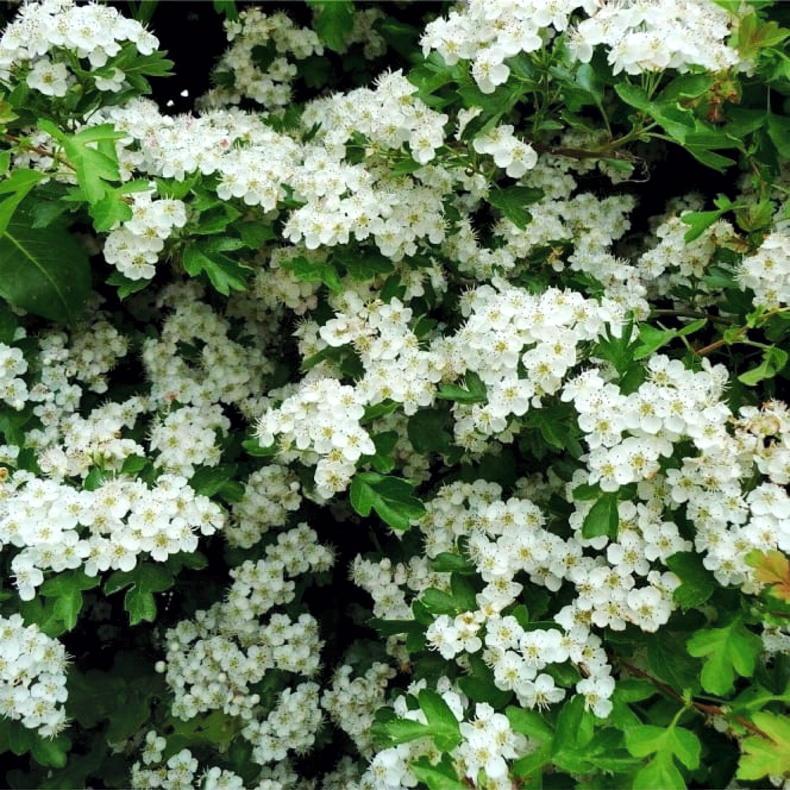
Ireland’s native hawthorn, Crataegus monogyna, is an ideal tree for a small garden with attractive flowers and fruit that support a wide variety of wildlife. \ Mary Keenan
For a small garden, one of the best trees for biodiversity is our native hawthorn, Crataegus monogyna, which supports around 300 wildlife species. While a common feature in our roadside and field hedgerows, hawthorn is largely overlooked for its potential as a garden tree despite offering multi-seasonal interest and being tolerant of a wide range of growing conditions. In May, its domed crown is almost smothered with sprays of fragrant, creamy white flowers. These are followed in autumn by plentiful, dark red berries, while the thorny branches and gnarled trunks of mature trees often have a striking sculptural character.
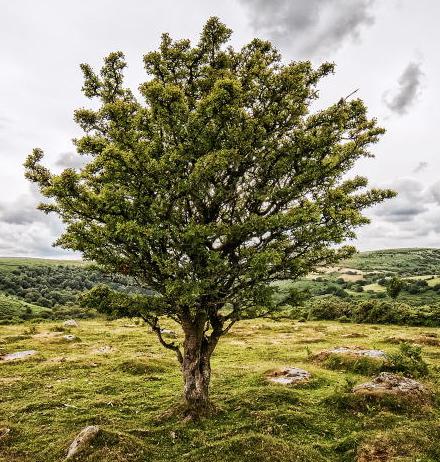
Hawthorn tree.
Our native hawthorn can be difficult to source as a standard tree in a nursery or garden centre and so, for Tree Week, I have bought a bundle of saplings that are normally planted for hedging. These I am potting up into containers to grow on and train for planting as stand-alone specimen trees in the garden and around our farmland in a couple of years. When grown as trees they will achieve around five to six metres in height.
Timely Reminder: clear planting backlog
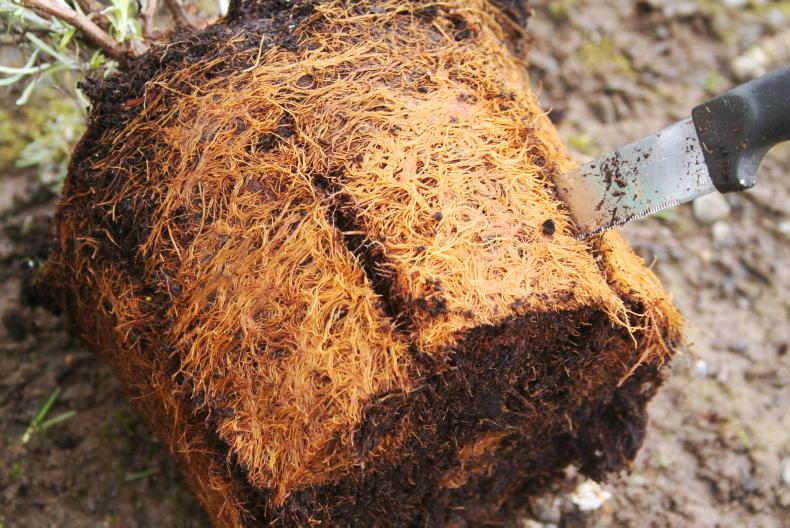
Sometimes plants left in containers for too long become pot-bound with a tangle of roots circling the perimeter of a pot. \ Mary Keenan
If, like me, you have an accumulation of plant purchases that have been sitting in their containers awaiting planting for too long, set yourself a target to get them into the ground before the end of this month. With rising soil temperatures, it’s a good time for planting shrubs and perennials to get them off to a good start.
Sometimes plants left in containers for too long become pot-bound with a tangle of roots circling the perimeter of a pot. Where this occurs, use a sharp knife to make vertical cuts 2cm to 5cm deep in three or four places around the root ball. I also cut away some of the mat of roots from the sides and bottom before planting.
This stimulates the growth of new feeder roots and enables better establishment. If the plant’s leaves are yellowed and starved from being left too long in their containers, apply a liquid feed around the root area in early summer after planting.
This Month’s To-Do List
Lift, divide and replant congested clumps of herbaceous perennials or those that delivered poor flowering last year. Lightly trim winter-flowering heathers when finished flowering, taking care to remove only the dead flowers and avoid cutting back into old wood.Prune winter-flowering jasmine to control growth and stop it getting straggly, tying in new shoots you want to retain.Magnolia lecture – an illustrated lecture by international magnolia expert, Jim Gardiner on Saturday 11 March at 2pm. Venue: National Botanic Gardens, Glasnevin, Dublin. Free entry but advance booking essential.
Kilkenny Castle Talks – A series of free garden talks in the Parade Tower at Kilkenny Castle hosted by the Office of Public Works (OPW), starting on the 21 March until 9 May. Doors open at 7pm. For further details see: www.kilkennycastle.ie. Speakers and topics include:
21 March: Rosie Maye. ‘The greedy gardener — how to have colour in every season’.28 March: Roger Goodwillie. ‘Wildlife lessons from the garden’.Plant Fair – Irish Specialist Nursery Association (ISNA) Spring Plant Fair on Sunday 2 April. Venue: Claregalway Castle, Co. Galway. Go along to source interesting and unusual plants and get advice directly from the growers.
Mary Keenan and Ross Doyle run Gash Gardens, Co. Laois open to the public. www.gashgardens.ie
Read more
Mary Keenan's Garden Diary: tidy ups and tulips
Mary Keenan’s Garden Diary: break for the border
To stand beneath the twiggy canopy of a mature specimen of Magnolia campbellii when covered in hundreds of rose-pink, water-lily-like flowers is an unforgettable and breathtakingly beautiful sight, especially when viewed against a brilliant blue sky. During last week, it was for that experience alone that I made a visit to Mount Congreve Gardens in Co Waterford. It’s a place I have visited several times during peak flowering of the garden’s renowned collection of rhododendrons in April and May, but it was well worth this earlier visit to enjoy the magnolias and camellias in their full glory.
Mount Congreve House and Gardens has recently reopened to the public following a €7 million re-development to enhance the visitor experience of these internationally significant gardens. Entry to the gardens is now through part of the historic Mount Congreve House, incorporating an interesting audio-visual exhibition of the garden and family history. A new purpose-built visitor centre with a café and shop has been created in the adjoining courtyard and former stables and colourful new signage and interpretation is interspersed throughout. For me, as a consummate plant nerd, the principal attraction is, however, the 70 acres of woodland gardens with their unique and special botanical collection that makes Mount Congreve a wonderful place to visit through all the seasons.
When admiring the enchanting beauty of mature trees in a garden like Mount Congreve, one has to appreciate the foresight of the person who planted them for our enjoyment. Some trees like the magnificent Magnolia campbellii can take 15 or more years from planting to produce their first flowers. The selfless action of planting trees to benefit future generations often brings to my mind an old Greek proverb that says a society grows great when old men plant trees whose shade they know they shall never sit in.
As a generation, we enjoy a legacy of many beautiful, old and mature trees that are now reaching the end of their lifespan and I’m of the firm view that we have a duty to the generations to come to plant trees on their behalf. It is this view that inspires my commitment to planting at least one new tree in my garden every year during National Tree Week, which this year takes place from 19 to 26 March. The theme is ‘Biodiversity Begins with Trees’. A multitude of species depend on trees to provide food, shelter, nesting and growing habitats.
Planting trees is a key action in slowing down biodiversity loss, which is an increasingly serious issue that directly impacts daily human living. Oak trees are generally regarded as having more associated species of wildlife than any other native trees in Ireland, supporting well over 500 different species. But, not everybody has the space to plant an oak.

Ireland’s native hawthorn, Crataegus monogyna, is an ideal tree for a small garden with attractive flowers and fruit that support a wide variety of wildlife. \ Mary Keenan
For a small garden, one of the best trees for biodiversity is our native hawthorn, Crataegus monogyna, which supports around 300 wildlife species. While a common feature in our roadside and field hedgerows, hawthorn is largely overlooked for its potential as a garden tree despite offering multi-seasonal interest and being tolerant of a wide range of growing conditions. In May, its domed crown is almost smothered with sprays of fragrant, creamy white flowers. These are followed in autumn by plentiful, dark red berries, while the thorny branches and gnarled trunks of mature trees often have a striking sculptural character.

Hawthorn tree.
Our native hawthorn can be difficult to source as a standard tree in a nursery or garden centre and so, for Tree Week, I have bought a bundle of saplings that are normally planted for hedging. These I am potting up into containers to grow on and train for planting as stand-alone specimen trees in the garden and around our farmland in a couple of years. When grown as trees they will achieve around five to six metres in height.
Timely Reminder: clear planting backlog

Sometimes plants left in containers for too long become pot-bound with a tangle of roots circling the perimeter of a pot. \ Mary Keenan
If, like me, you have an accumulation of plant purchases that have been sitting in their containers awaiting planting for too long, set yourself a target to get them into the ground before the end of this month. With rising soil temperatures, it’s a good time for planting shrubs and perennials to get them off to a good start.
Sometimes plants left in containers for too long become pot-bound with a tangle of roots circling the perimeter of a pot. Where this occurs, use a sharp knife to make vertical cuts 2cm to 5cm deep in three or four places around the root ball. I also cut away some of the mat of roots from the sides and bottom before planting.
This stimulates the growth of new feeder roots and enables better establishment. If the plant’s leaves are yellowed and starved from being left too long in their containers, apply a liquid feed around the root area in early summer after planting.
This Month’s To-Do List
Lift, divide and replant congested clumps of herbaceous perennials or those that delivered poor flowering last year. Lightly trim winter-flowering heathers when finished flowering, taking care to remove only the dead flowers and avoid cutting back into old wood.Prune winter-flowering jasmine to control growth and stop it getting straggly, tying in new shoots you want to retain.Magnolia lecture – an illustrated lecture by international magnolia expert, Jim Gardiner on Saturday 11 March at 2pm. Venue: National Botanic Gardens, Glasnevin, Dublin. Free entry but advance booking essential.
Kilkenny Castle Talks – A series of free garden talks in the Parade Tower at Kilkenny Castle hosted by the Office of Public Works (OPW), starting on the 21 March until 9 May. Doors open at 7pm. For further details see: www.kilkennycastle.ie. Speakers and topics include:
21 March: Rosie Maye. ‘The greedy gardener — how to have colour in every season’.28 March: Roger Goodwillie. ‘Wildlife lessons from the garden’.Plant Fair – Irish Specialist Nursery Association (ISNA) Spring Plant Fair on Sunday 2 April. Venue: Claregalway Castle, Co. Galway. Go along to source interesting and unusual plants and get advice directly from the growers.
Mary Keenan and Ross Doyle run Gash Gardens, Co. Laois open to the public. www.gashgardens.ie
Read more
Mary Keenan's Garden Diary: tidy ups and tulips
Mary Keenan’s Garden Diary: break for the border









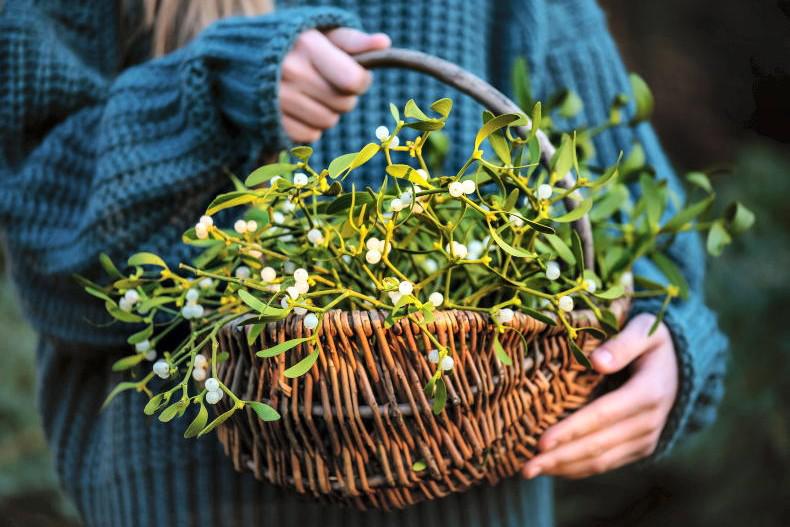
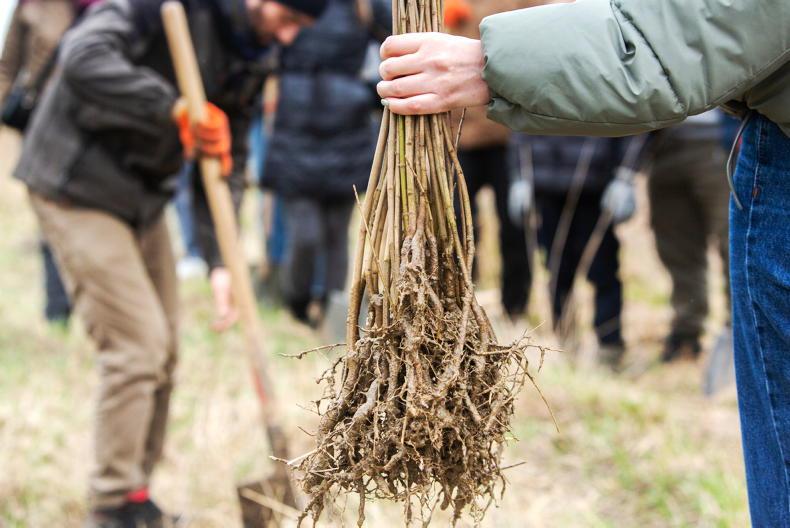


SHARING OPTIONS